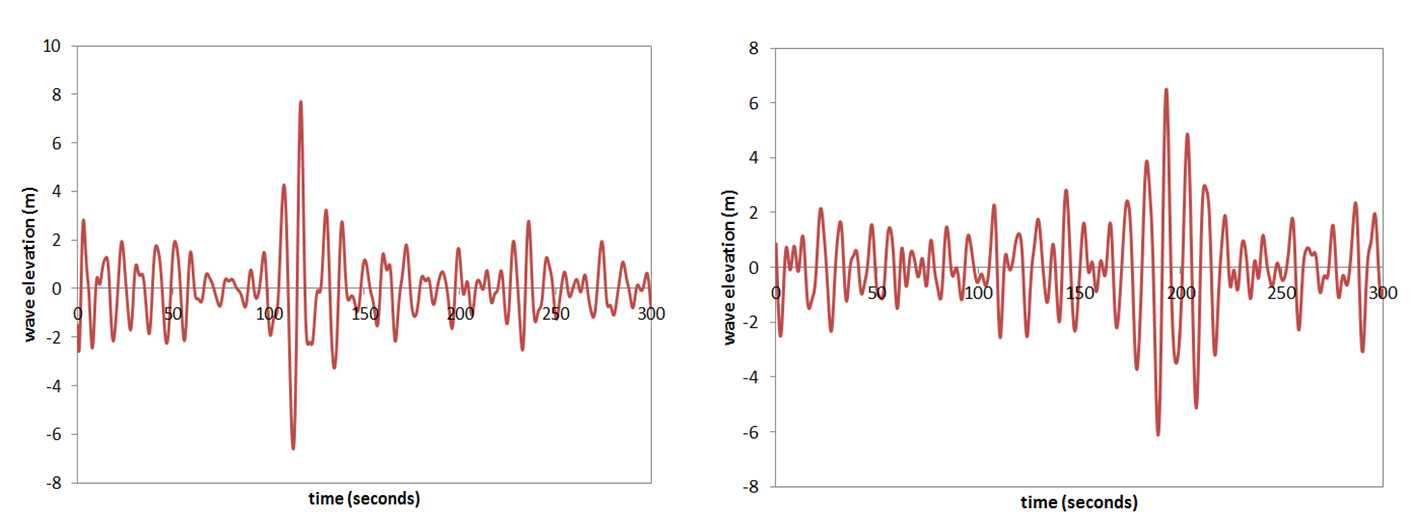Freak (or abnormal or rogue or extreme) waves are a now well-known phenomenon due to widely publicised reports in the media of ship encounters with such waves.
 Research at the University of Southampton has been being conducted into the influence of freak waves on ships since 2007. Led by Dr Sally Bennett, investigations have taken the form of extensive towing tank testing into the motions and global loads experienced by a travelling vessel when encountering a freak wave in a range of sea conditions representative of those found around the globe. Such waves are unexpected, with a height at least twice that of the surrounding sea state. Often they occur in regular shipping lanes, meaning they are a real problem for the worlds shipping.
Research at the University of Southampton has been being conducted into the influence of freak waves on ships since 2007. Led by Dr Sally Bennett, investigations have taken the form of extensive towing tank testing into the motions and global loads experienced by a travelling vessel when encountering a freak wave in a range of sea conditions representative of those found around the globe. Such waves are unexpected, with a height at least twice that of the surrounding sea state. Often they occur in regular shipping lanes, meaning they are a real problem for the worlds shipping.

Results have shown significant increases during tank testing not only in the measured responses but also those observed using high-speed camera imagery, compared to in a random sea state that does not contain a rogue wave. Figure 1 shows a naval frigate travelling at the model scale equivalent of 18 knots through a freak wave; rather than being able to climb over the wave the vessel instead tunnels though the wave crest before falling down into the following wave trough resulting in significant amounts of green water and slamming loads on the bow of the vessel. Indeed measurements showed that the accelerations as well as the loads experienced by the vessel were substantially larger in this scenario than in a comparable random sea.
Whilst it may seem unrealistic to test a model at the equivalent to 18 knots in these waves, in reality such waves appear from nowhere with little time for the crew of the vessel to adjust either course or speed; hence such a scenario is completely possible and the level of damage a vessel can sustain is substantial. In one case in 1973, the Bencrauchan encountered a freak wave whilst travelling at speed and the entire bow of the vessel was bent due to the green water loading on the structure.
Whilst the occurrence of a single freak wave has been investigated in detail, media reporting is increasingly describing incidents that involve a sequence of at least 2 or 3 freak waves (a freak wave group) such as that shown in Figure 2. Recent events include the RMS Queen Elizabeth II in 1995 and the Louis Majesty in 2010. Quite often it is the appearance of a second or third abnormally tall wave crest that results in the significant damage, due to a vessel not being able to recover from the first wave impact before the subsequent impacts occur. This project will therefore now focus on this key area research and look at quantifying what can be done to help ships survive such extreme wave encounters.

